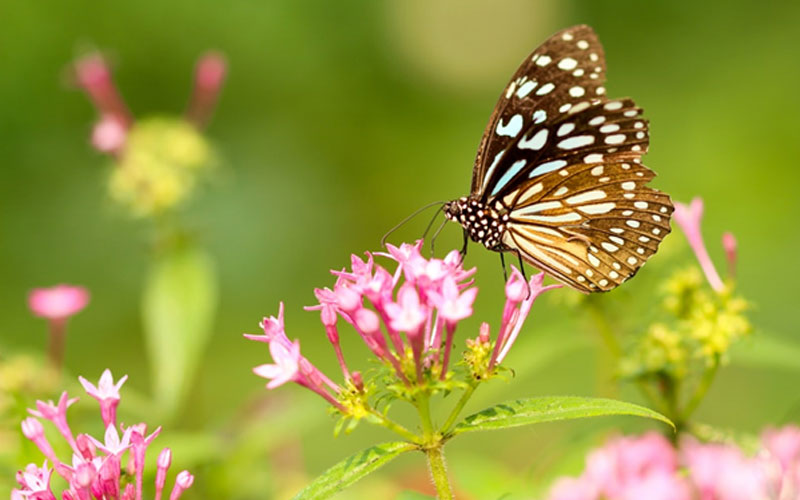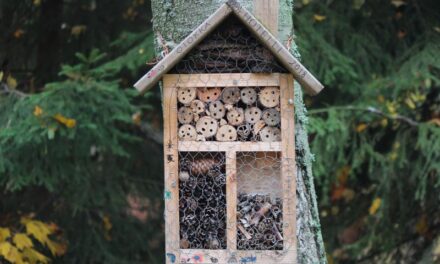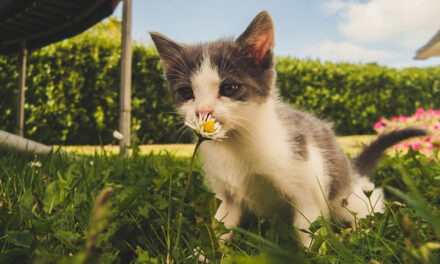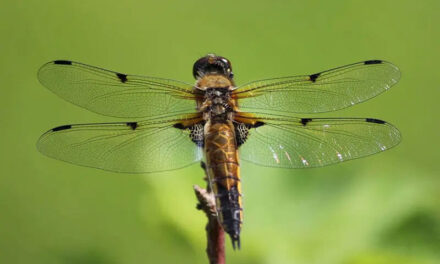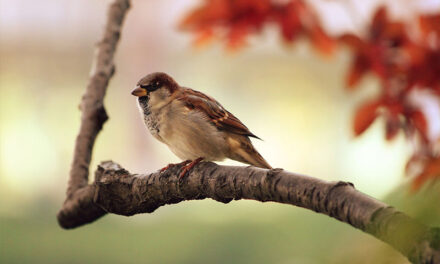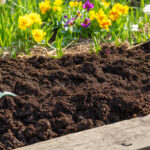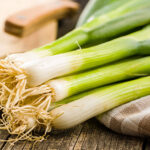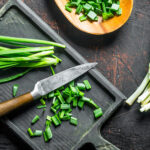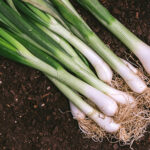Making a butterfly garden starts with planting the right plants. Butterflies feed on nectar, a sweet substance found in flowers. Butterflies love the sun and warmth. In winter they need a safe hiding place. Food plants for caterpillars are indispensable, they are terribly picky and like only a few types of plants.
Why do I want butterflies in my garden?
Most butterflies only live a few weeks, but some live a year. The butterfly population is decreasing worldwide. Butterflies are not only beautiful animals but also very useful creatures. Butterflies pollinate flowers when they visit the flowers to suck up nectar. Furthermore, many other animals eat caterpillars, pupae, and butterflies, which means they have their usefulness in the food chain.
For humans, the appearance of certain species of butterflies is an indicator of how nature is doing in that place. Conversely, the disappearance of a species can be a sign that nature is not doing well.
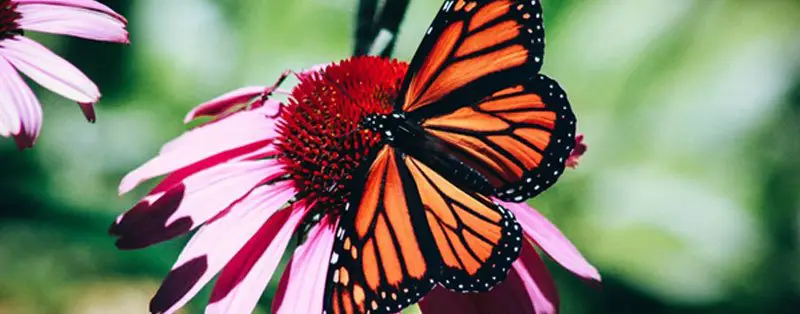
Butterfly plants
Nectar plants act as a magnet to butterflies. Nectar is the sweet viscous liquid that comes out through the glands of the flowers of the nectar plants. Butterflies love it. Many types of flowering perennials are nectar plants. To lure as many butterflies to your garden as possible, make sure you have plants that flower in the period from March to October.
Read along for a list of the perfect plants for your butterfly garden.
Butterfly bush
The most famous nectar plant is of course the butterfly bush, which is ideally suited for attracting butterflies. The Latin name for this plant is Buddleja. There are about 100 species and varieties of this species. There are varieties that flower in early spring, from March/April to varieties that flower through December. They are available in the colors white, pink, all shades of purple to dark red.
Sunflower
This is a widely known flower. Less known is that it also occurs in various species, coloring from yellow to reddish-brown. Most varieties are annuals, but perennial sunflowers are also available. The height of the flower varies from 70 cm to 300 cm. There is therefore a suitable sunflower for every garden. In addition to butterflies, the sunflower also attracts bees and bumblebees.
Pincushion flower
Also known as Scabiosa Columbaria. In some countries, this pincushion flower is on the red list of threatened species. Even more reason to plant these on your border. The plant grows to a height of 30-90 cm and flowers from July to September with reddish lilac, sometimes white flowers.
Sneezeweeds
In Latin, you call Sneezeweeds Helenium. This plant is available in yellow, red, orange, and brown. The height is between 60 and 200 cm. This flower enriches your border with color from late summer to autumn. It is a strong, very hardy plant that prefers a sunny spot.
Verbena Bonariensis
Verbena Bonariensis is commonly known as purpletop vervain. This is a biennial plant that self-sows, giving you years of pleasure. The purple flowering verbena flowers from July to September and grows to a height of about 100-140 cm. Due to the transparent growth habit, the plant combines well in various garden styles.
Lavender
True lavender or narrow-leaved lavender is a low, highly branched shrub. Lavender originally comes from Southern Europe. The height is about 75 cm. There are more than 25 varieties of lavender, but there are only a few that are winter hardy. The Lavendula Angustifolia is a hardy lavender variety. By far the most famous variety is the purple variety, but there are also white and pink lavender varieties. Lavender prefers a sunny place. In a pot, the lavender does require water in hot weather and nutrition in the form of manure. Pruning is important, to keep the plants in good shape it is necessary to prune once or twice a year. The first time after flowering in September, but after the winter (in April) you can divide the plant. This way the lavender will not become woody and wild and the plant can last 15 to 20 years.
Coneflower
Its Latin name is Echinacea. This beautiful perennial grows about 100-120 high. The beautiful dark pink flowers with a dark orange-brown center appear in July/August and the bloom can last until October, depending on location and weather conditions. Echinacea is also available in the colors red, white, yellow, yellow with pink and yellow/green. On the border, they combine very nicely with ornamental grasses. The height is between 70 and 100 cm.
Yarrows
Achillea Millefolium is the Latin name of this perennial. Like the Echinacea, this plant has medicinal properties. This native plant is available in white and dark pink. Yarrow blooms from shortly before the longest day until November. The flowers are a screen of tiny flowers. Yarrow owes its name to its double feathered leaf, which gives the impression that the plant consists of numerous small leaves. The plant is 15 to 50 cm high.
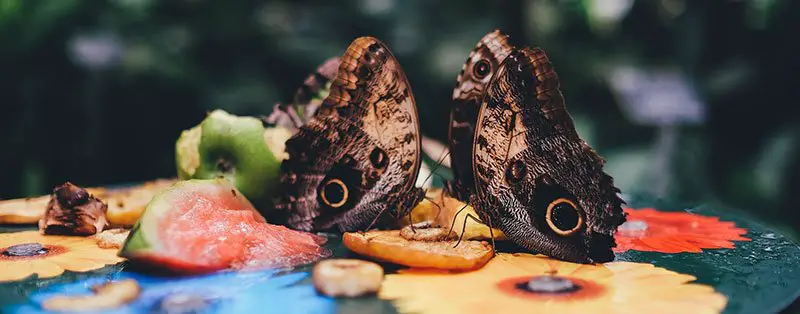
What butterfly eat
There are special feeding bowls for butterflies available for your butterfly garden. A feeding bowl consists of a colorful bowl with many holes in it so that the butterflies with their long rolling tongues can get their food from underneath the holes, just like with a flower. You can put, for example, sugar water in the bowl.
In addition, overripe or rotting fruit on a platter is a favorite food. Pamper ‘your’ butterflies with fruits, such as apple, pear, grapes, melon, banana, or orange. This manual supplement is a nice extra.
The most important thing for the butterflies is of course the nectar plants. There are also specific wishes for each butterfly species, such as fresh cabbage leaves for cabbage whites.
Plants for caterpillars
Your butterfly garden isn’t ready with ‘just’ plants butterflies love. You also need plants for the caterpillars! Butterflies reproduce by laying eggs. This produces caterpillars, which then turn into butterflies.
Butterflies lay their eggs only on the leaves of certain plants. These are called host plants. When the caterpillar hatch, they eat the leaves of these plants. Depending on the butterfly species, caterpillars are very picky about the host plant.
The best-known host plants are nettles, Dame’s Rocket, Cuckoo Flowers, clover, holly, Buckthorn, and Common ivy.
To name a few examples per butterfly species:
- The large and small cabbage white caterpillars love cabbage species and other cruciferous plants, such as Dame’s Rocket, rapeseed, and Garden Nasturtium.
- The caterpillars of the Atalanta, Peacock butterfly, small tortoiseshell, Comma, and the map love nettle.
By keeping these plants in your garden, you give the butterflies the chance to reproduce. Your garden will not be more beautiful, since the caterpillars eat the leaves. But without caterpillars: no butterflies. Maybe you can plant the host plants in a forgotten corner, or in a place that is out of sight.
Butterfly in winter
There are types of butterflies that stick around in your butterfly garden during winter. For example the Common brimstone, the Peacock butterfly, the Comma, and the small tortoiseshell. Some butterflies hide in a sheltered corner in a shed or a hollow tree. They hibernate and emerge again in the spring.
Most butterflies spend the winter as an egg, caterpillar, or pupa. The eggs of the butterflies are found in the stems of grasses in winter. These do not hatch but remain in the grass all winter. Only when spring comes do they emerge as caterpillars.
Some butterflies hibernate as caterpillars, they sit dead still all winter and are well equipped to withstand the cold. As soon as spring starts, they become active again and continue to eat happily until they pupate.
The butterflies that survive the winter as pupa are also well hidden. You can find them hanging somewhere between your plants or just laying on the ground. So don’t clean up faded plants and fallen leaves in your garden and do not mow your grass in winter.
You can help the butterflies hibernate by placing a butterfly box. Hang this box in a sheltered place, out of the wind where it doesn’t rain. Fill the box with some dry leaves and twigs. And you’ll have some happy butterflies.

